Auriol Kensington Rowing Club:
150 years of rowing on the Tideway

Eight rowers, moving in perfect unison, make their way down the Tideway as the sun rises over Hammersmith Bridge early on Saturday morning. On the bank dozens of people dressed in green and pink coloured kit are carrying boats and blades in preparation for their outing on the water.
For 150 years Auriol Kensington Rowing Club (AKRC), an amalgamation of Kensington Rowing Club and Auriol Rowing Club, has been a home for rowers on the Thames. Located in Hammersmith on an old boat builder's estate, AKRC has produced 1912 Olympic rowing gold medallist Wally Kinnear and numerous National Rowing Champions.
To commemorate its anniversary this year, older members, affectionately called vets, look back at the club’s history while a younger generation prepares for the biggest race of the season – Henley Women’s Regatta.
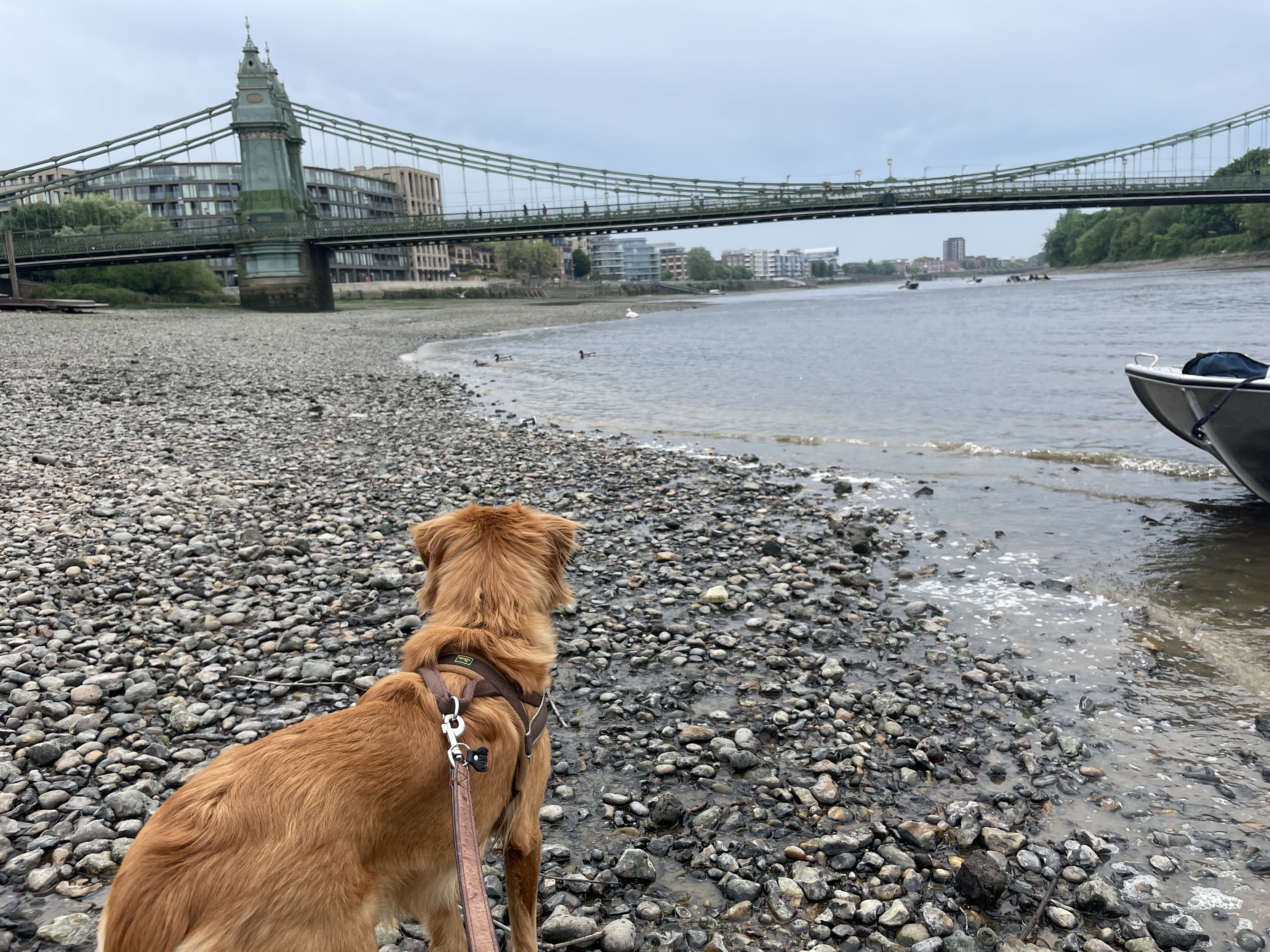
Daisy, AKRC boat house dog, looks towards Hammersmith Bridge.
Daisy, AKRC boat house dog, looks towards Hammersmith Bridge.
A Tale of Two Clubs:
The history of Auriol Kensington Rowing Club

The History
Stacked behind a rack of boats and disused wellies in AKRC’s boathouse are hundreds of historical documents, photos, membership cards, and club minutes neatly preserved in plastic boxes. Tim Koch, self-described rowing historian and member of AKRC, has collected them since joining the club 38 years ago.
The 64-year-old said: “Everything I get involved in I always end up looking at the history of it. Rowing is a very under-researched field and so it’s comparatively easy to do a lot of original research.”
The origin of rowing as a leisure activity, according to Tim, was a Victorian invention and emerged from the idea that a person's character could be strengthened through sport. Along with cricket, rugby, and football, rowing was introduced in British schools and universities in the 1830s and quickly became an accessible sport for ordinary workers and gentlemen alike.
The first non-academic rowing club on the Tideway, for example, was founded in Greenwich by a group of lightermen, or barge workers. Poplar Blackwall and District Rowing Club was set up in 1854 and is one of the oldest rowing clubs in Great Britain.
In contrast, Kensington Rowing Club, the direct predecessor of AKRC, was founded in 1872 by a group of white-collar workers. The founders, so Tim, were likely connected to the larger department stores in the West End and adopted the genteel name of ‘Kensington’ to convey their social position.
The second predecessor of AKRC, Auriol Rowing Club, was founded 24 years later by Reverend Propert to promote the novel philosophy of muscular Christianity, characterised by a belief in self-discipline and the physical beauty of athleticism. The club received its name from Auriol Road, the street on which the Reverend lived in Hammersmith.
Initially having renting adjacent club houses, the two rivals moved into different floors of the same building at 14 Lower Mall following the First World War. According to Tim, the relationship between the two clubs was characterised by animosity from the start.
The club's historian explained: “Kensington was on the top floor and their urinals were constantly overflowing and dripping into Auriol. But equally Auriol, who were on the lower floor, had a gas fire without a flue so carbon monoxide was leaking into Kensington bar. So, very symbolically Kensington were pissing on Auriol and Auriol were gassing Kensington.”
However, following the second World War both clubs had been struggling with low membership and lack of money for several years. Out of necessity the two clubs amalgamated in 1981 to form Auriol Kensington Rowing Club.
Listen to Tim Koch.
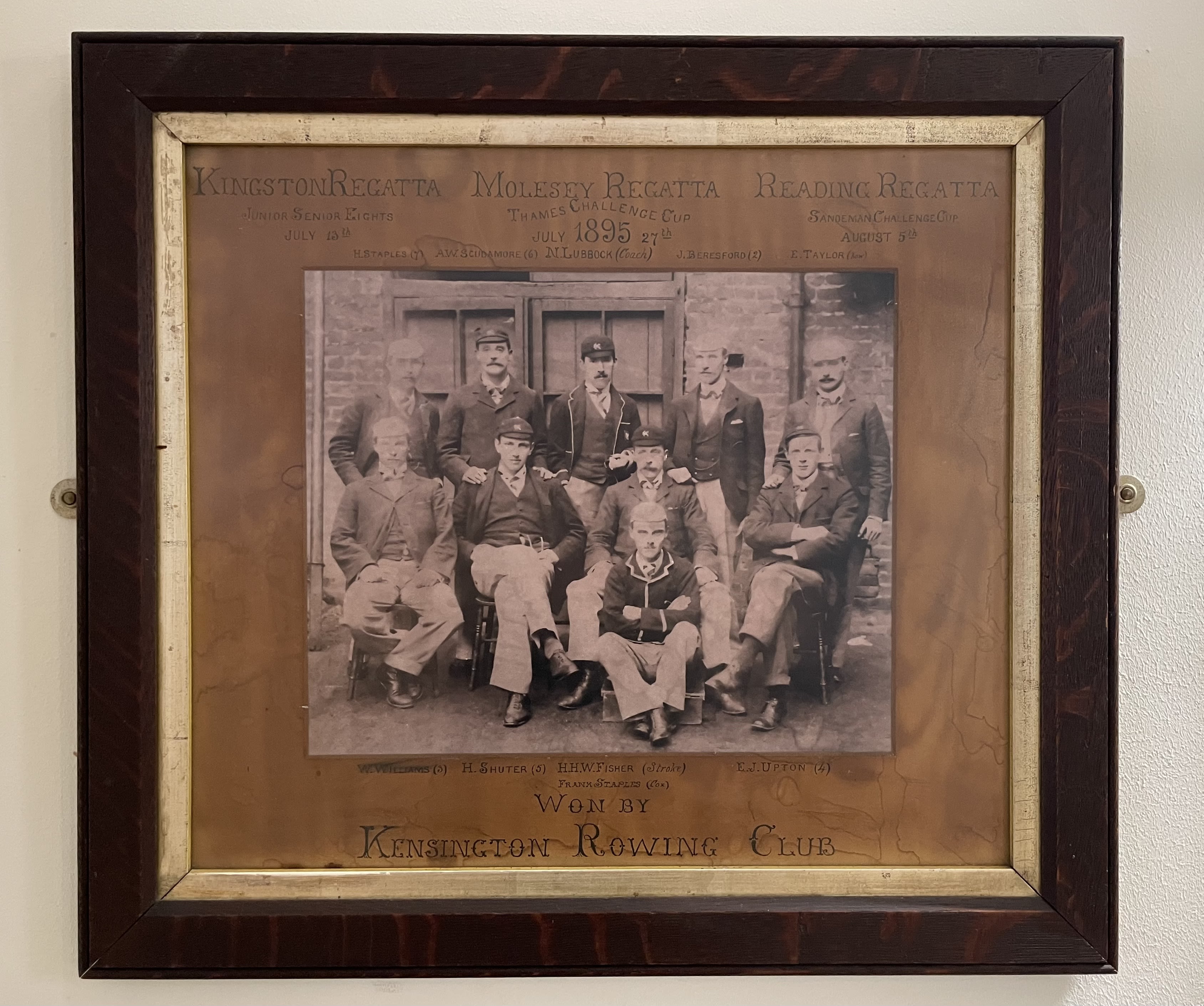
Kensington Rowing Club members in 1895.
Kensington Rowing Club members in 1895.
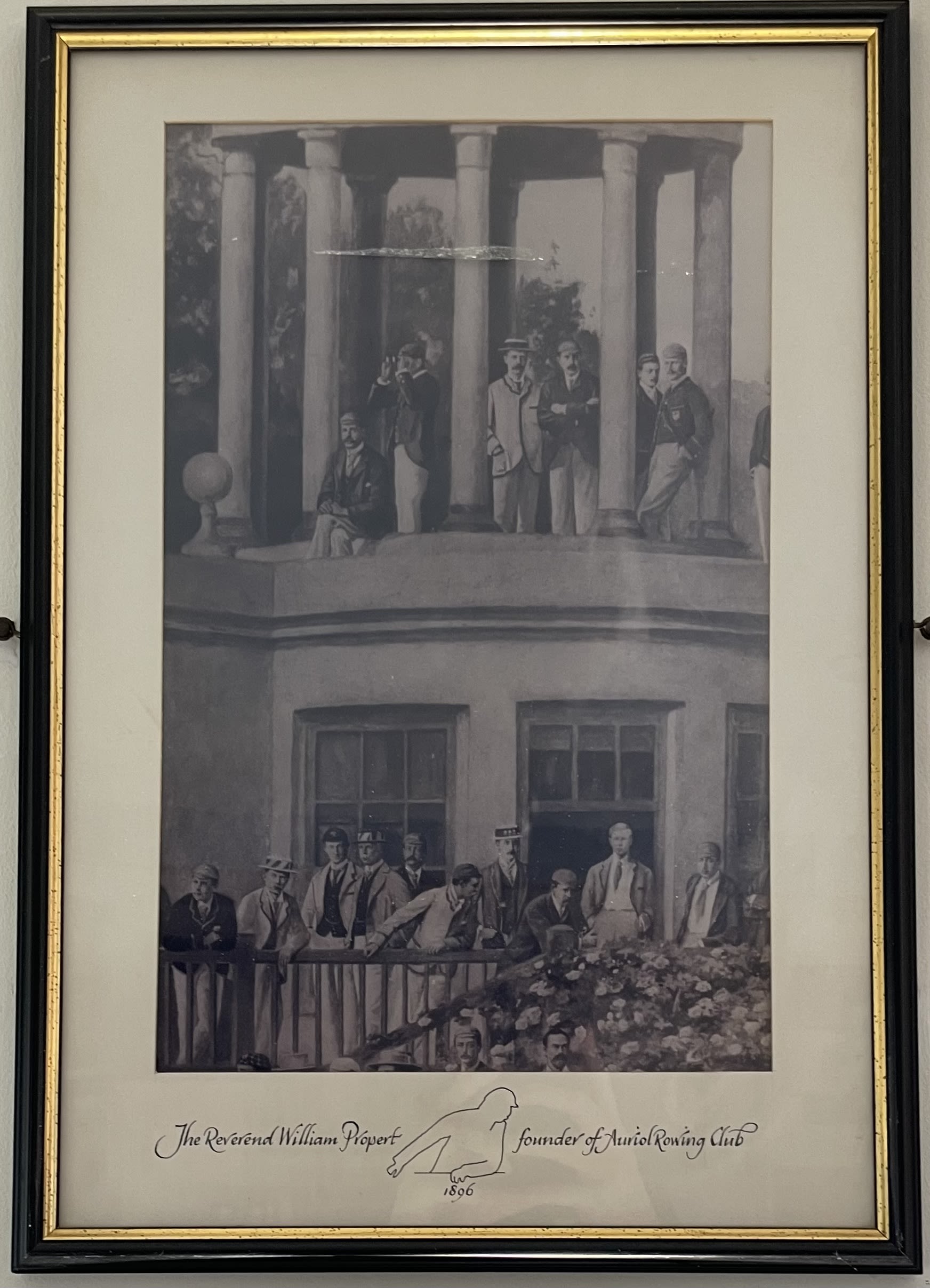
Reverend William Propert, founder of Auriol Rowing Club (leaning lower middle).
Reverend William Propert, founder of Auriol Rowing Club (leaning lower middle).
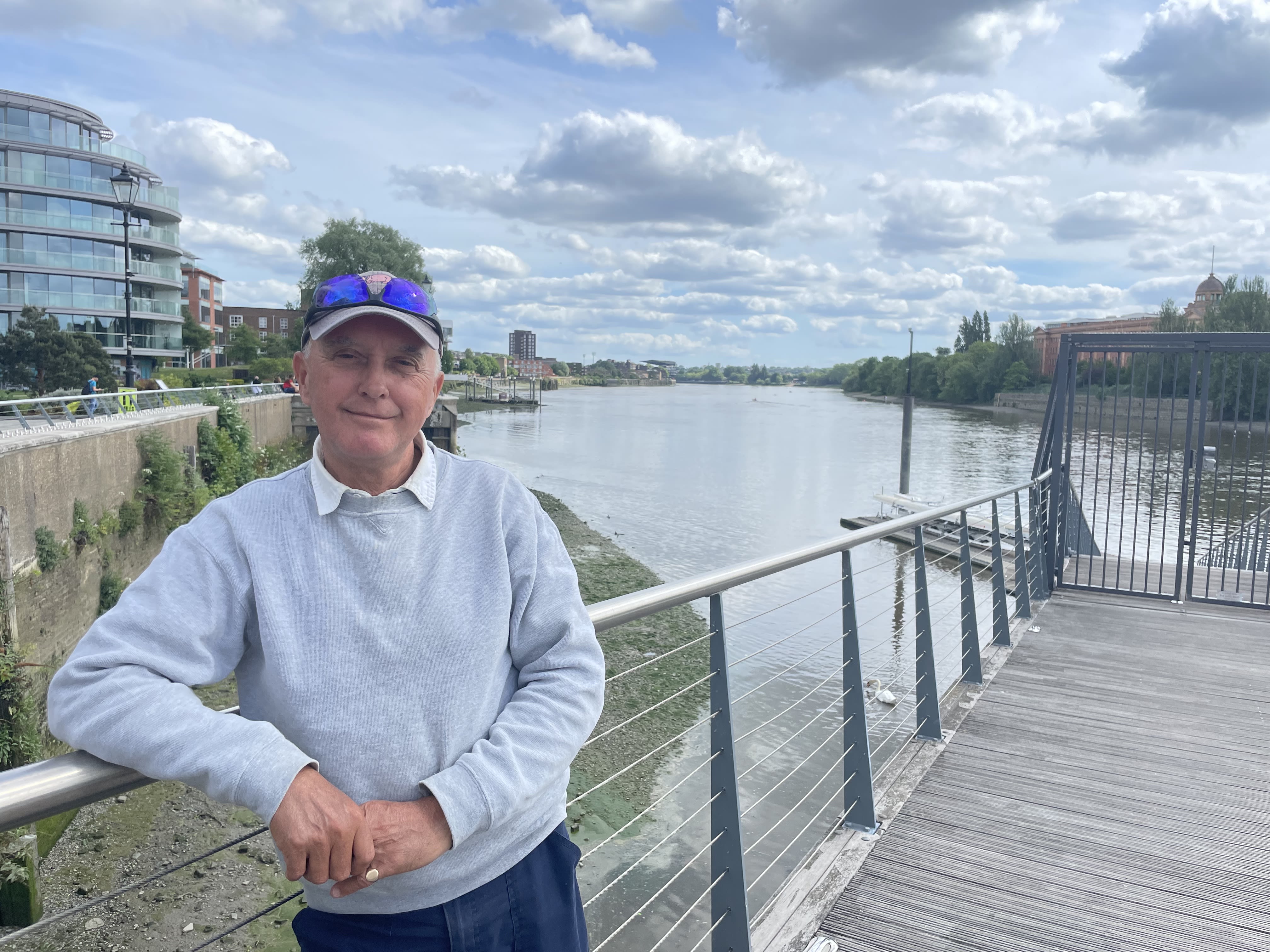
Tim Koch is a rowing historian and member of Auriol Kensington Rowing Club.
Tim Koch is a rowing historian and member of Auriol Kensington Rowing Club.
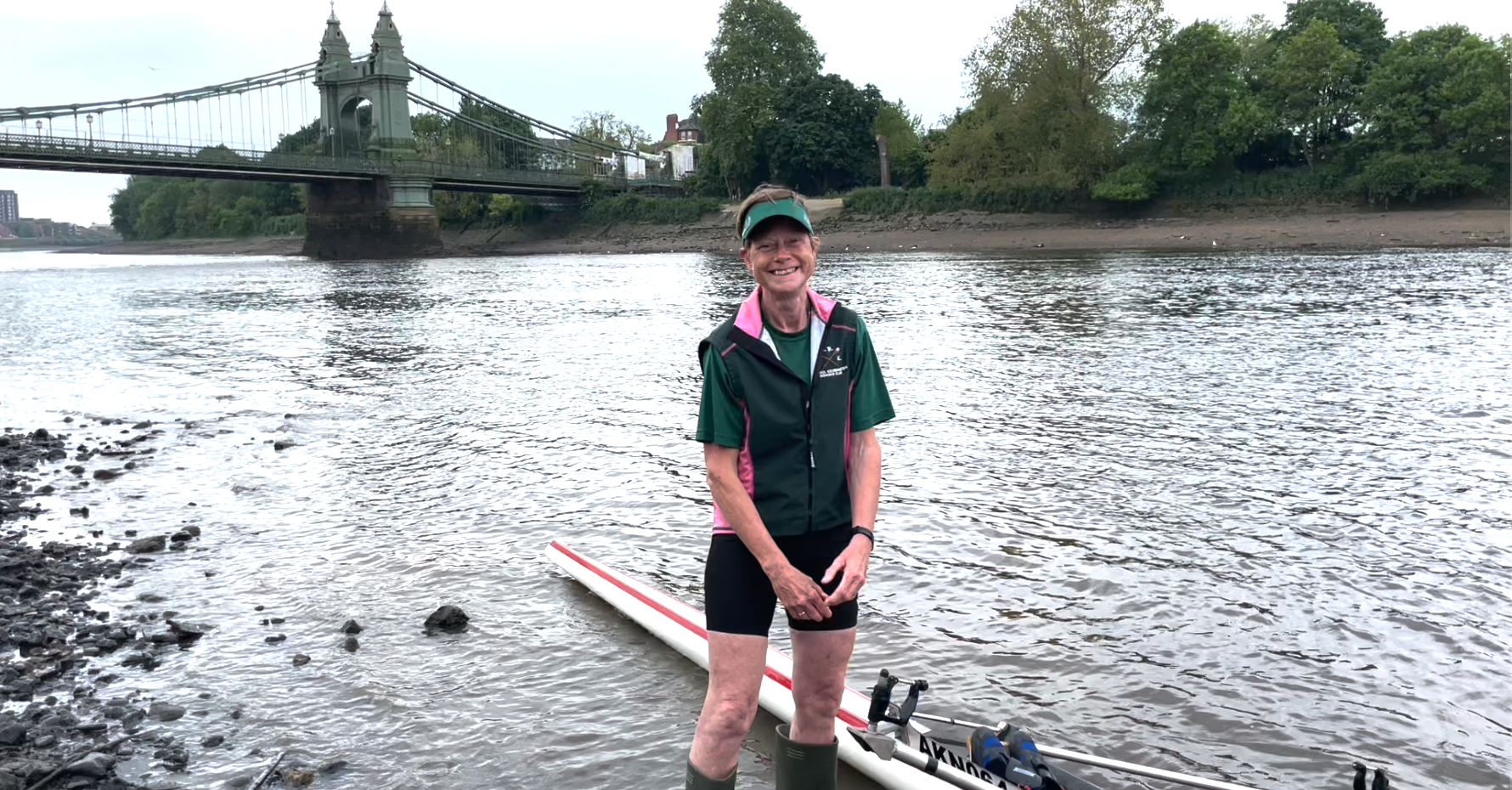
Julie Watson is the first female member and first female president of AKRC.
Julie Watson is the first female member and first female president of AKRC.
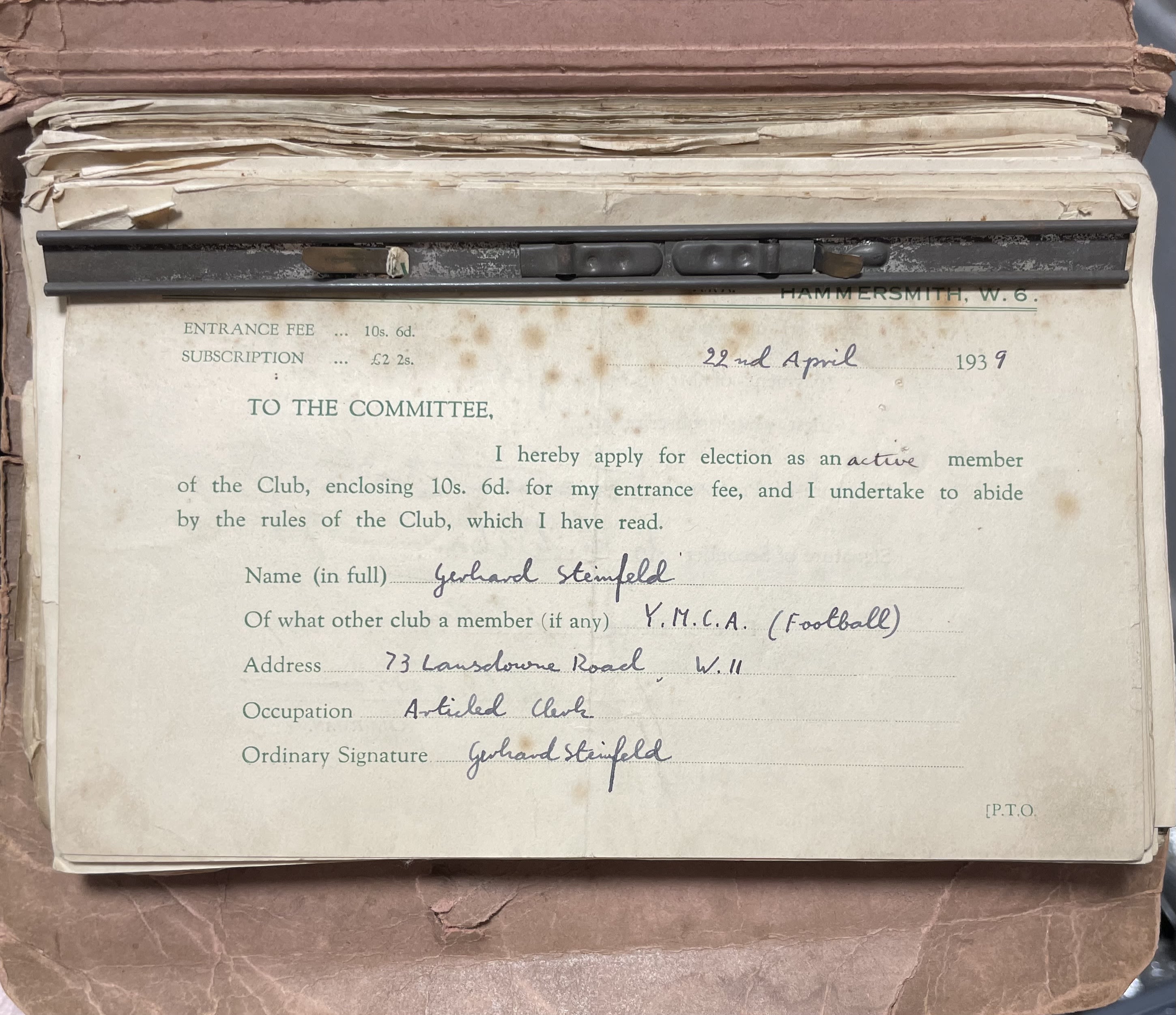
Membership card of Gerhard Steinfeld from 1939.
Membership card of Gerhard Steinfeld from 1939.
Julie Watson explains how she became the first female member.
Julie Watson explains how she became the first female member.
The President
Today, the club has around 170 members across a men’s, women’s, and vet’s squad as well as a development group for new rowers. After an extensive remodelling project completed in 2014 the clubhouse is now large enough to accommodate its growing membership.
Julie Watson, AKRC president, said: “I think it’s a club where you can take rowing seriously but you can also have a bit of fun and nobody is excluded, everyone can be part of it.”
The 57-year-old came to the club in 1987 as a coxswain, the person steering the boat, when women were still excluded from becoming rowing members. While some women had begun to row in late Victorian times, it remained unusual to see women row competitively until the last quarter of the twentieth century.
Julie said: “I was competing with another girl for the coxswain seat to cox a senior men’s crew at Henley and the other girl won.”
Having taken a liking to the sport, Julie decided to start rowing by herself and quickly began winning races. However, at the time British Rowing, a national governing body for rowing, mandated that anyone participating in races needed to be a member of a club.
She continued: “So, some of the older men from the club proposed me at an AGM and I was made the first fully-fledged female member of the club in 1990.”
The women’s squad expanded rapidly thereafter and the club entered its first crew at Henley Women’s Regatta two years later. Julie herself also enjoyed remarkable success, becoming a finalist in the Henley Women’s double event, competing in the qualifiers for the first ever women's event at Henley Royal Regatta, and winning bronze in the lightweight singles at the National Championships.
The charity worker, who previously worked in the Department of Clinical Parasitology at the Hospital for Tropical Disease, said: “My favourite thing about rowing is being out on the water, either by myself or in a crew and having a good outing. It’s a way of mentally relaxing.”
Julie’s proudest moments of her time at AKRC included being elected as the first female president last year and having had a boat named after her. The ‘Julie Watson’ is now frequently used by the vets – the very men who had first welcomed her to the club as a coxswain more than forty years ago.
The Kensington Man
One of those veteran rowers is Jimmy Pigden, 80, who joined Kensington Rowing Club in 1955 after being introduced to the club by his ex-girlfriend’s then new boyfriend, Brian, with whom he retained a lifelong friendship. At 14 years old he began coxing the senior men.
He remembered: “I would give instructions to put ‘hands on’ and we would take the boat down to the river. All these big men doing what I told them to do. I thought this is great.”
After every outing the rowers would put the boat and blades away and come up to Kensington bar where they would buy him bags of crisps and half pints of orange and lemonade, Jimmy continued.
Born during an air raid in 1941, Jimmy grew up in London and started working in the finishing department of a paper company at the age of 16.
He said: “Rowing changed my life. When I first came to the club, I was destined to be an engineer or in printing. I would have been quite happy sitting at the end of a folding machine and cutting paper for the rest of my life.”
However, being surrounded by white collar workers whenever he was at the club made him realise, he did not want a manual job like that. After several years of hard work and persistence he eventually moved out of the finishing department to become a sales representative for the paper company.
Throughout this time, Jimmy remained a dedicated member of the club, taking up positions of Treasurer, Secretary and President throughout. At 80 years Jimmy still rows every week and said: “It’s just the whole atmosphere of the club and on the river, it’s just magic and I can’t imagine not doing it.”
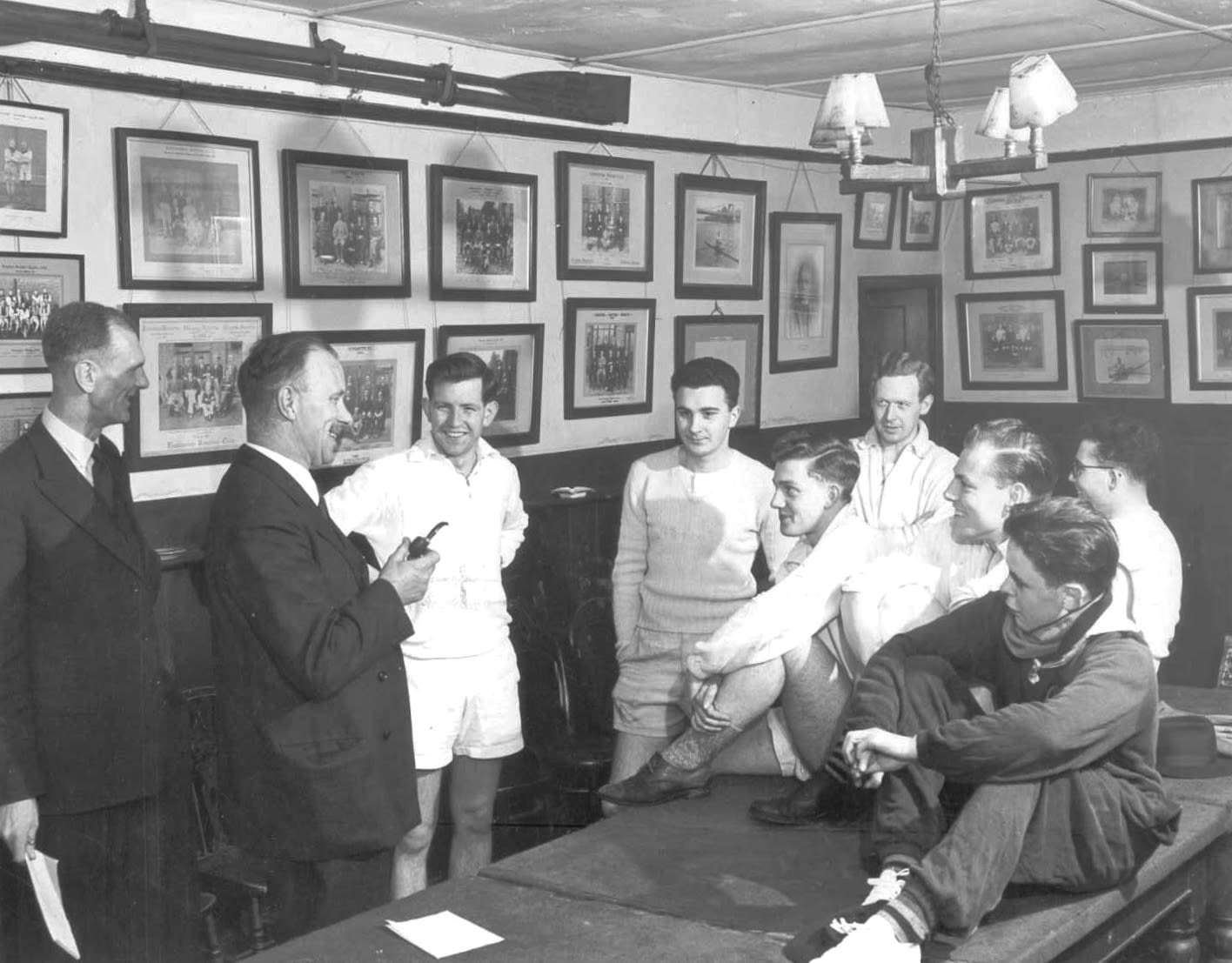
Jimmy Pigden (right) in an advertisement for Kensington Rowing Club, late 1950s. Image provided by Tim Koch.
Jimmy Pigden (right) in an advertisement for Kensington Rowing Club, late 1950s. Image provided by Tim Koch.
Jimmy Pigden explains how he became a member of Kensington Rowing Club.
Jimmy Pigden explains how he became a member of Kensington Rowing Club.

Boating from Biffen’s boat builders' raft, 1884. Image provided by Tim Koch.
Boating from Biffen’s boat builders' raft, 1884. Image provided by Tim Koch.
Michael Lepper remembers rowing on the Tideway in the 1950s.
Michael Lepper remembers rowing on the Tideway in the 1950s.
The Auriol Man
Rowing on the Tideway in the 1950s, however, looked drastically different to today. Back then the Thames was still a commercial river frequently used by large barges and tugboats.
Michael Lepper remembered: “The river was a fearsome project and rowing was really dangerous. God, you don’t know what it was like, dead dogs, cats, rats, it really was foul.”
The 82-year-old came to Auriol Rowing Club at the age of 13 as a coxswain and learned to row two years later in 1955. At almost 70 years, Michael is the longest serving still active member of AKRC and has seen the Tideway change dramatically during that time.
The banks of the Thames were populated with hundreds of factories, which would dump driftwood and refuse in the water, he remembered. The wood, which often had nails and bolts sticking out, would pile up on the water and could easily puncture a boat, back then only made of thin wood rather than durable plastic.
Michael said: “At high tide, you could have walked across the river on the amount of driftwood that collected on the Hammersmith corner. It was a work of art to steer in those days.”
The veteran rower fondly remembers his time as a young man when the boat house bar barely ever shut and he spent most Saturday nights sleeping at the club house. During that time rowing was still a primarily male affair. His wife Dorothy, for example, recalled having to wait for express permission from a senior member to be allowed to enter the boat house whenever she met up with Michael after an outing.
Michael said: “I think rowing definitely changed for the better, mainly because ladies are now rowing as well.”
The Row to Henley:
Katherine Couper, Lucy Baker, Eliza Brandreth and Jess Hardwick
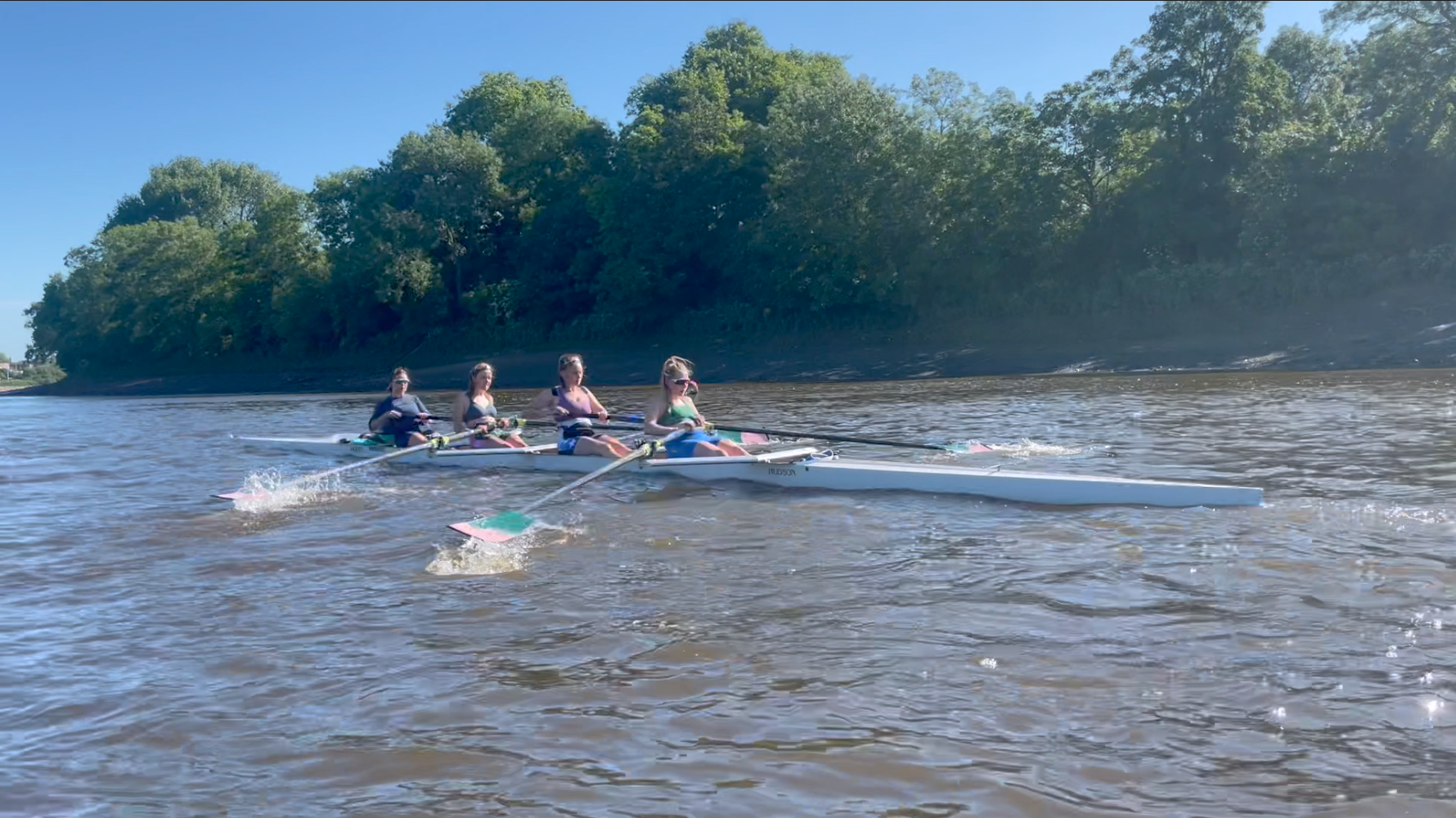
Four of such women are currently training to row at this year’s Henley Women’s Regatta at the end of June. Katherine May Couper, Lucy Baker, Eliza Brandreth and Jess Hardwick have been training up to four times on the water and several more times in the gym in preparation for the event.
Henley Women’s Regatta was first set up in 1988 in response to the absence of women’s events at Henley Royal Regatta (HRR), an international rowing event held annually at Henley-on-Thames. The women’s regatta remains one of the most important races in the calendar for female rowers, despite the fact that HRR has since introduced women’s events.
More than 1,500 international rowers participate each year in the three-day regatta held as a head-to-head knockout race over the course of 1,500m.
Katherine Couper, 34
Boat position: Bow.
Rowing history: Learned to row at AKRC in 2017.
Achievements: Racing Henley Women’s Regatta in 2019.
Henley preparation: Lots of training, prioritising sleep and recovery. Good hydration and nutrition.
Pre-race ritual: Having a bad row in training just before a race feels like a good thing to get it out of the system.
Favourite rowing memory: Some particularly memorable capsizes on training camp in Spain this year.
Lucy Baker, 22
Boat position: Two.
Rowing history: Learned to row at Durham University in 2017 and joined AKRC in 2020.
Achievements: Award for female contribution to rowing at Durham University.
Henley preparation: Training six times a week, good nutrition, and reduced alcohol consumption.
Pre-race ritual: 250g pasta and a pint of water the night before. Coffee and several wees the day of the race.
Favourite rowing memory: Winning first ever race at Hexham Regatta by a small margin against a more senior crew.
Eliza Brandreth, 21
Boat position: Three.
Rowing history: Learned to rowing in 2011 at LEH School and joined AKRC in 2019.
Achievements: Winning School’s Head in the J16 (junior) category.
Henley preparation: Drinking ban.
Pre-race ritual: Ensuring Lucy has had a wee. Before the race we clap each other on the back.
Favourite rowing memory: J16 GB vs France match in Valenciennes 2016.
Jess Hardwick, 28
Boat position: Stroke.
Rowing history: Learned to row at AKRC in 2018.
Achievements: Racing Henley Women’s Regatta in 2019 and getting an award for most improved woman in 2021.
Henley preparation: Making sure to stay on top of recovery, lots of stretching, hydration and good nutrition.
Pre-race ritual: 90 seconds at race pace on an ergometer beforehand.
Favourite rowing memory: Summer sunsets on the tideway and pontoon pints.

After two hours on the water working on technique and stamina early Saturday morning, the rowers return to the bank for breakfast. In the bar at AKRC several litres of coffee, bags of toast and cereal are quickly polished off to replenish before the second outing of the day. On the walls around them are photos and memorabilia charting the club's history.
While the Tideway and rowing may have changed over the past 150 years, the club's history has been incorporated into the fabric of AKRC - the colours painted on every blade and piece of kit are a combination of Kensington Rowing Club's pink and Auriol Rowing Club's green.

Auriol Kensington Rowing Club's blade colours. Image credits Wikimedia Commons.
Auriol Kensington Rowing Club's blade colours. Image credits Wikimedia Commons.
